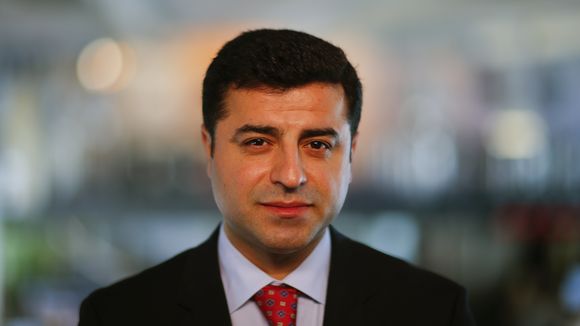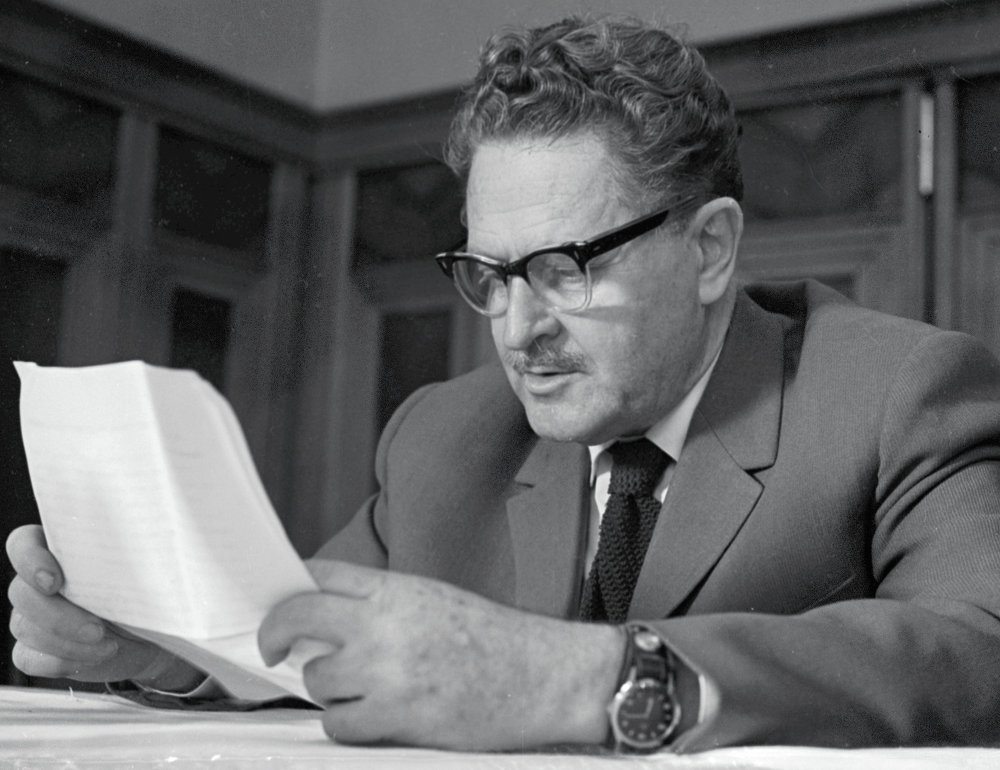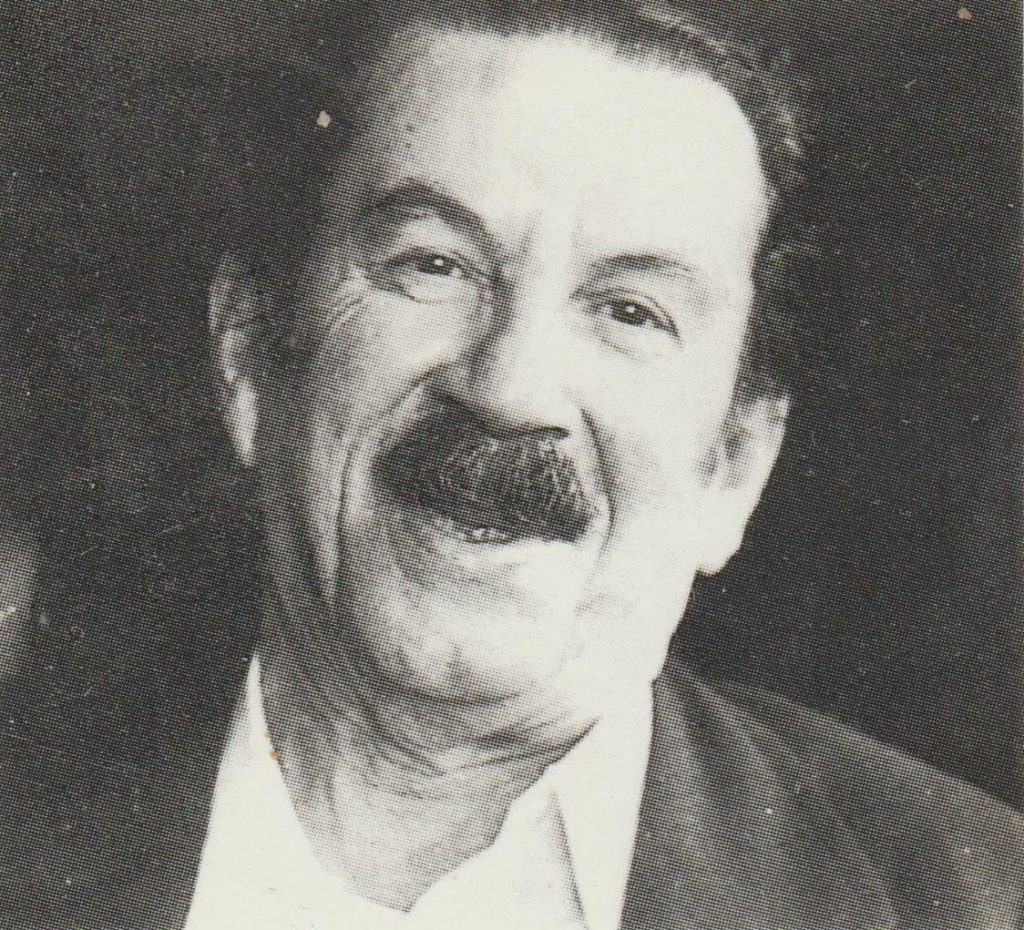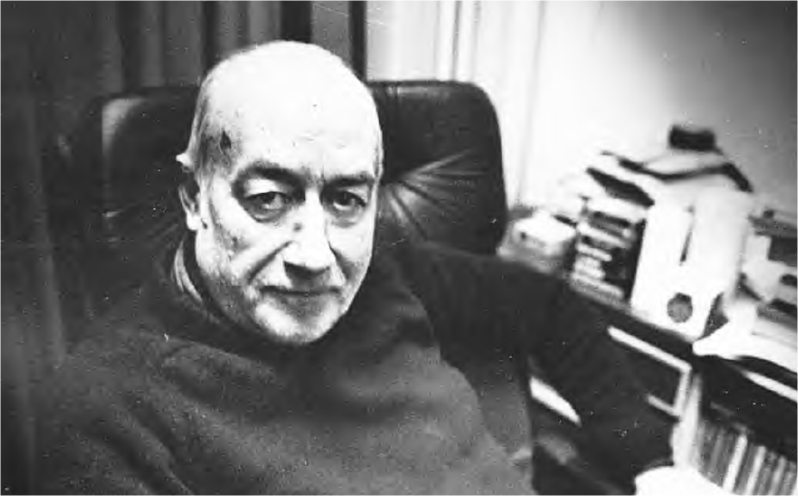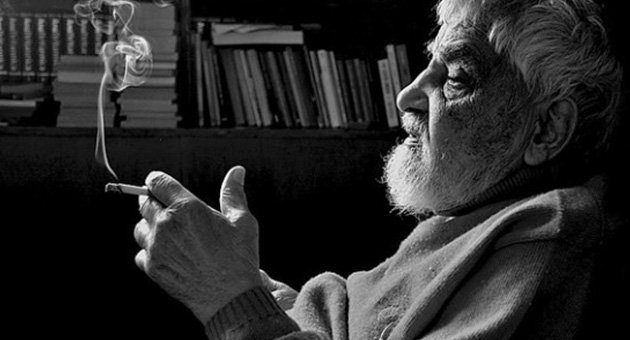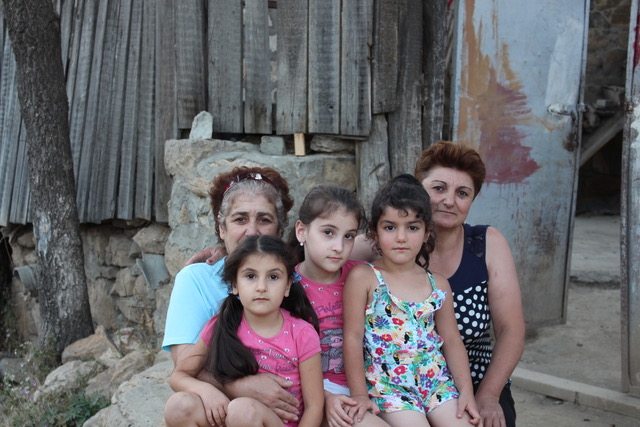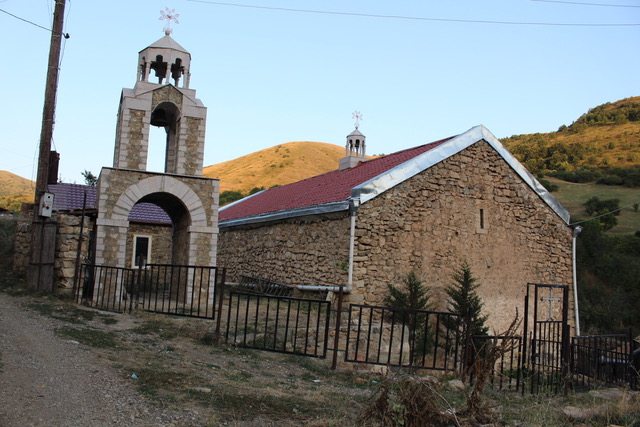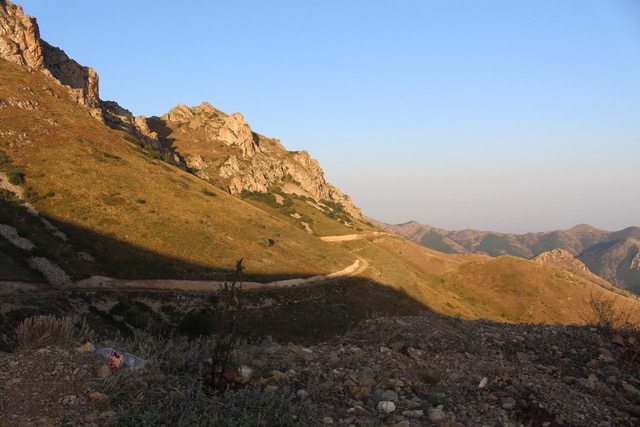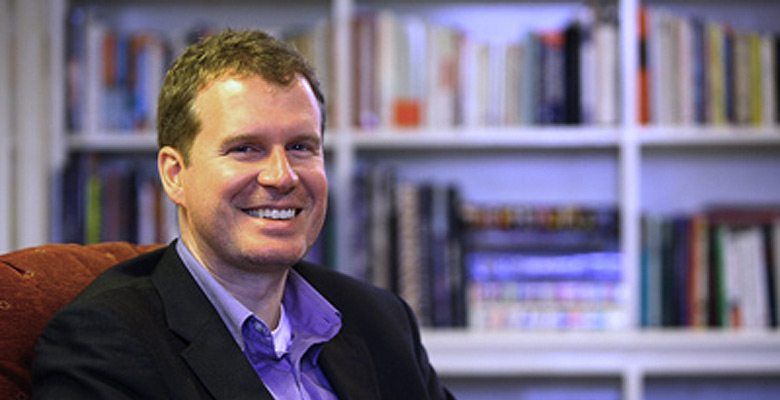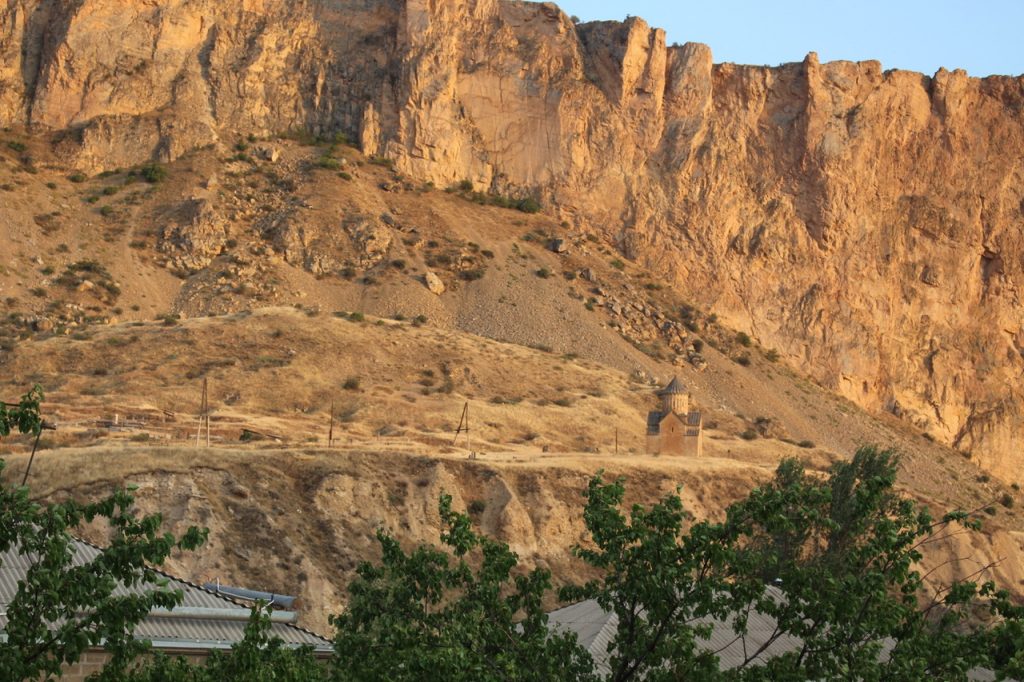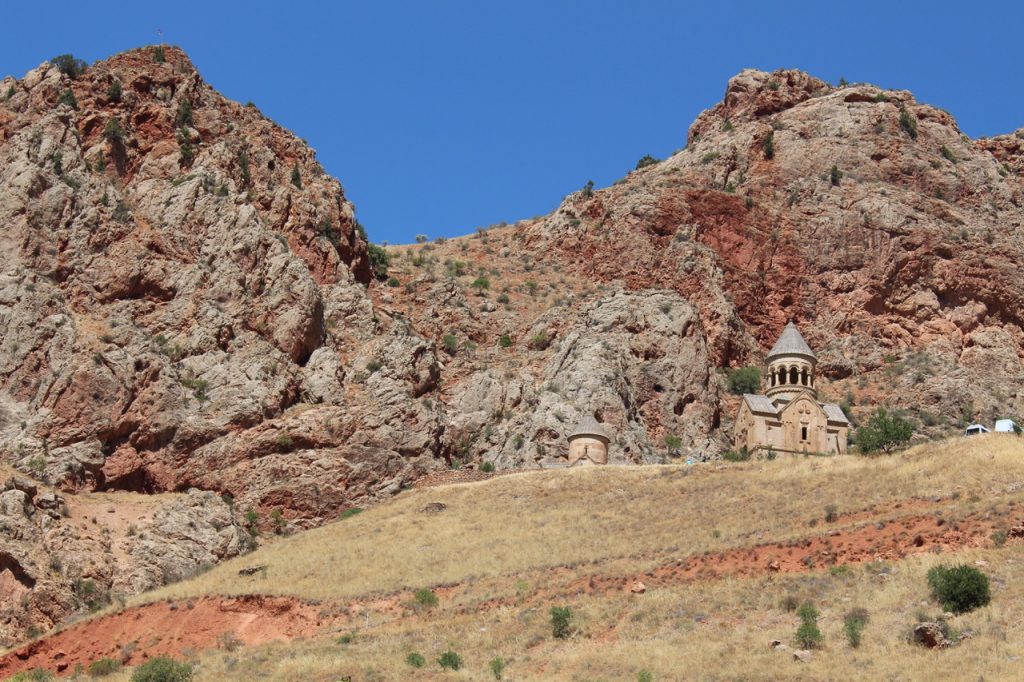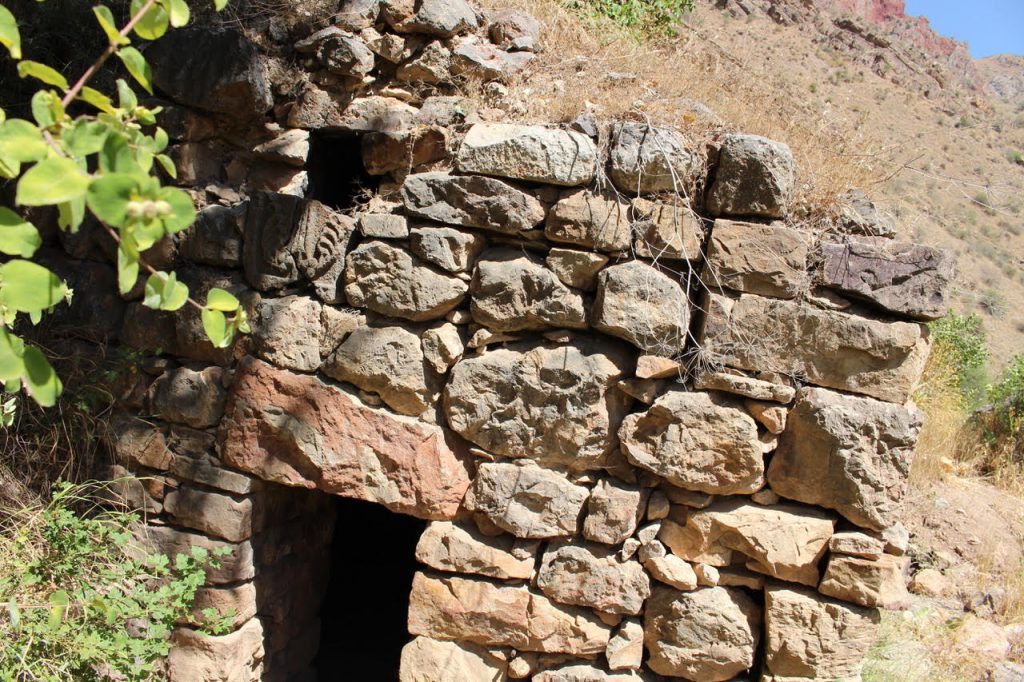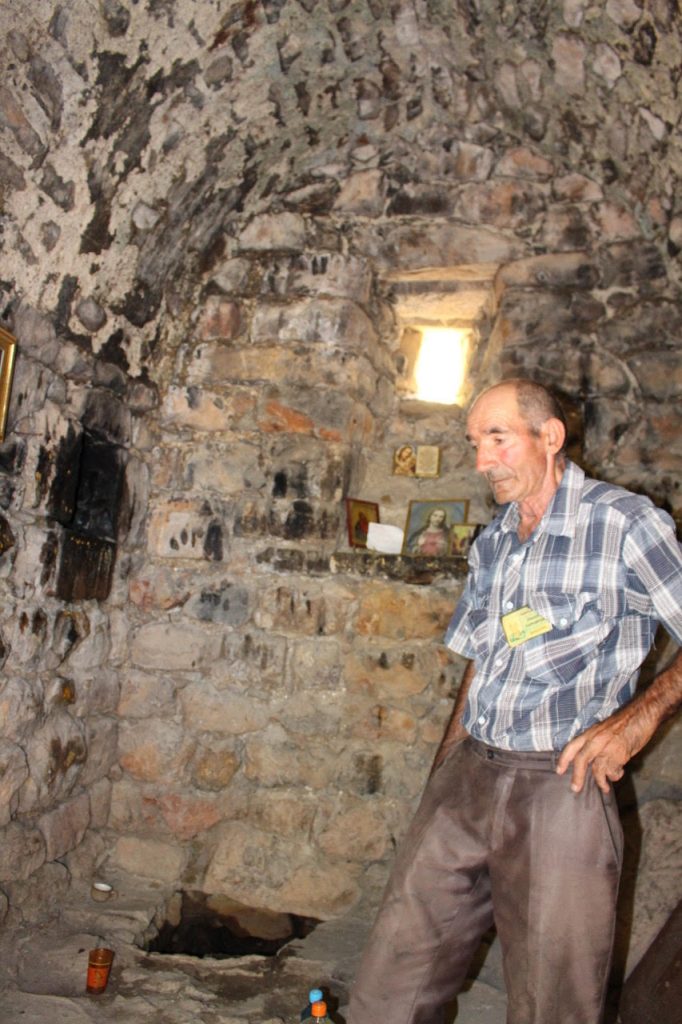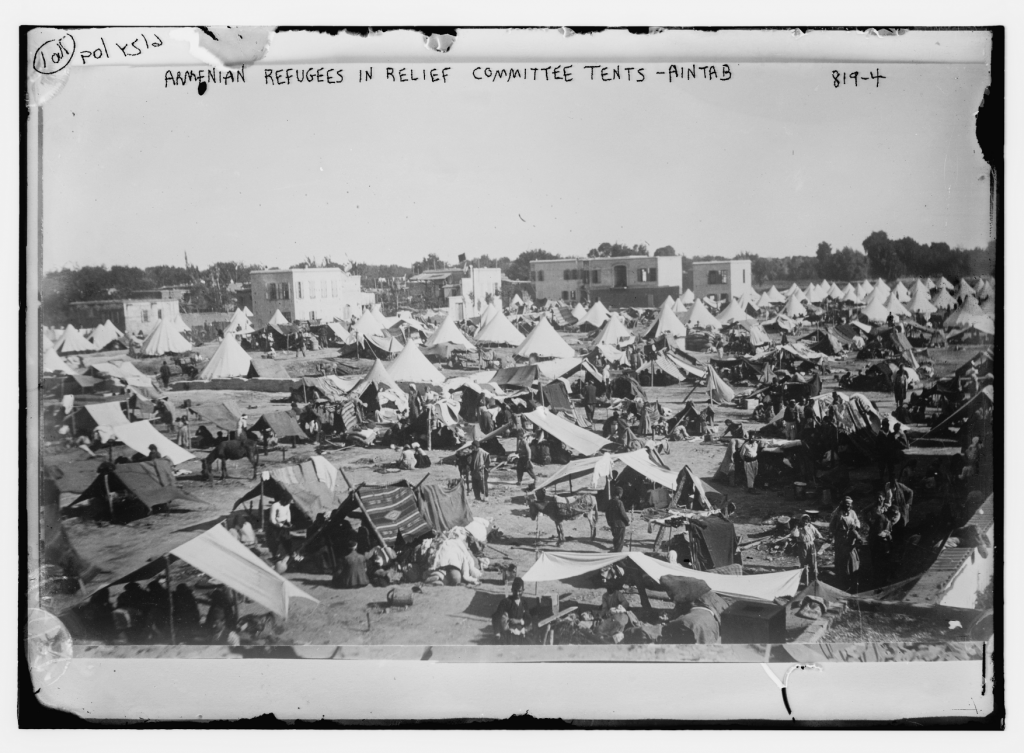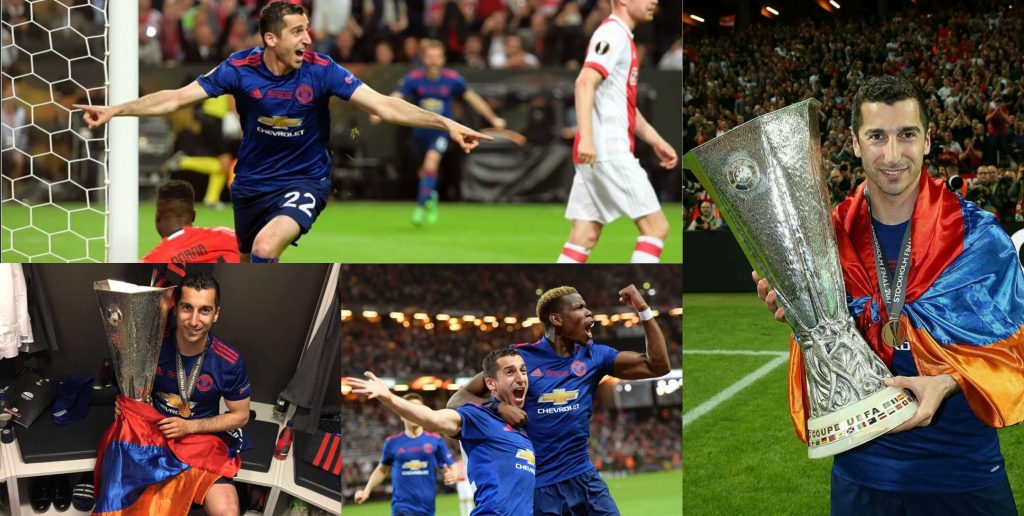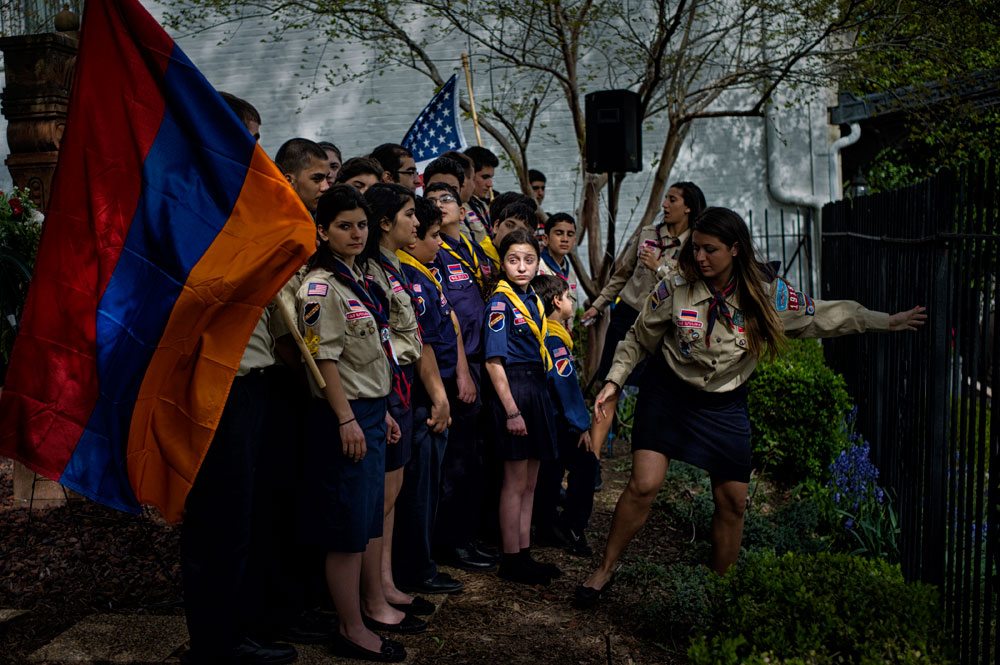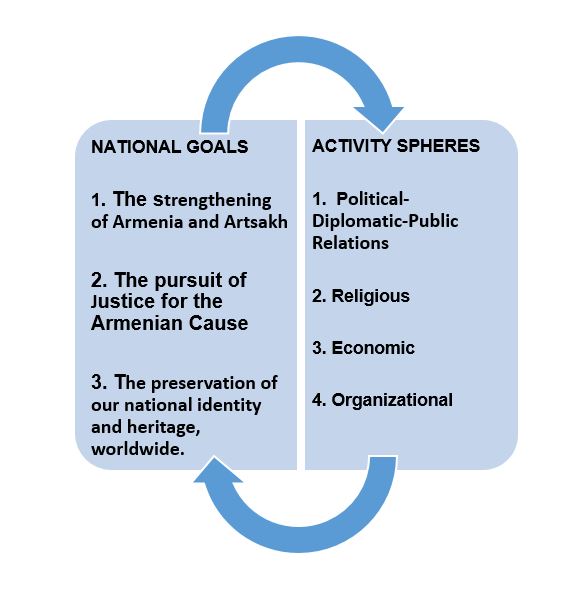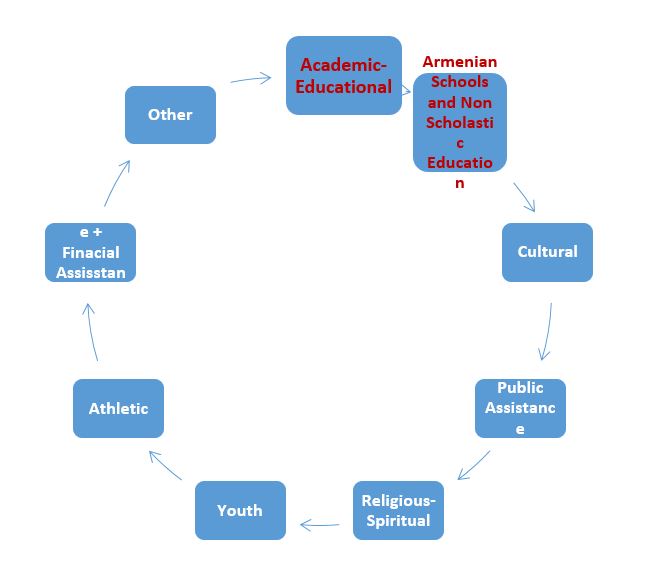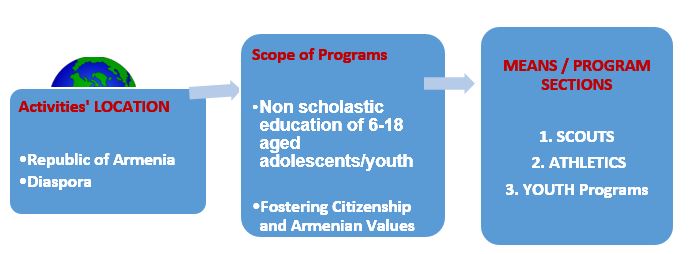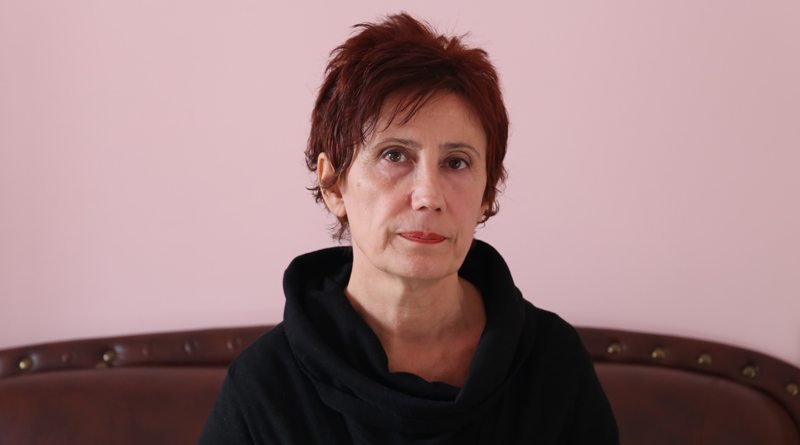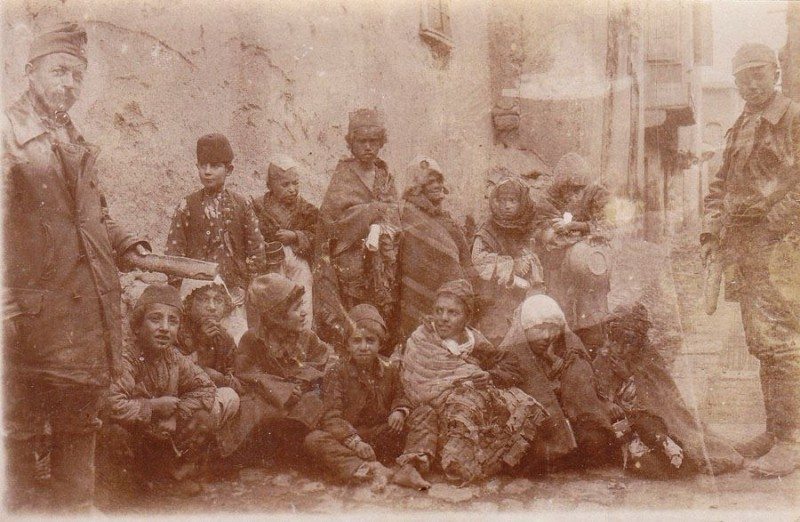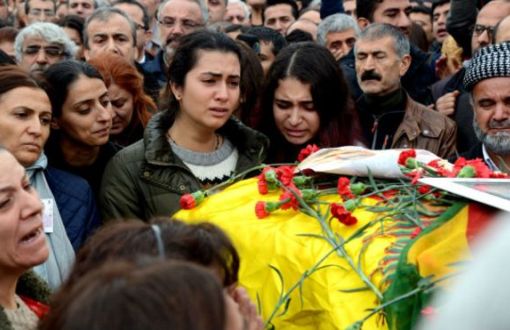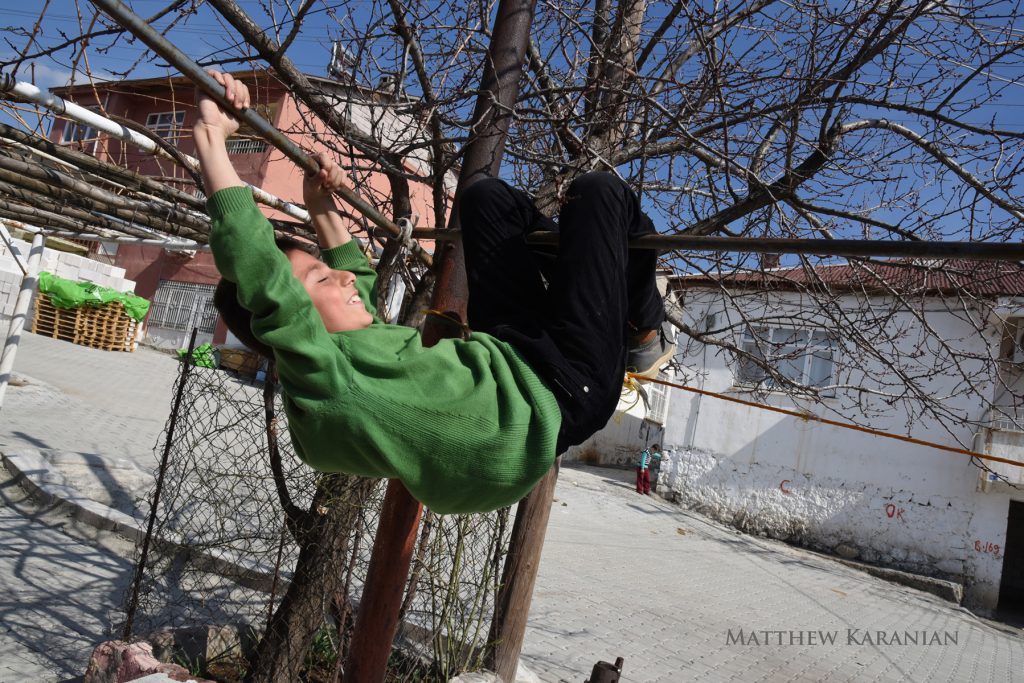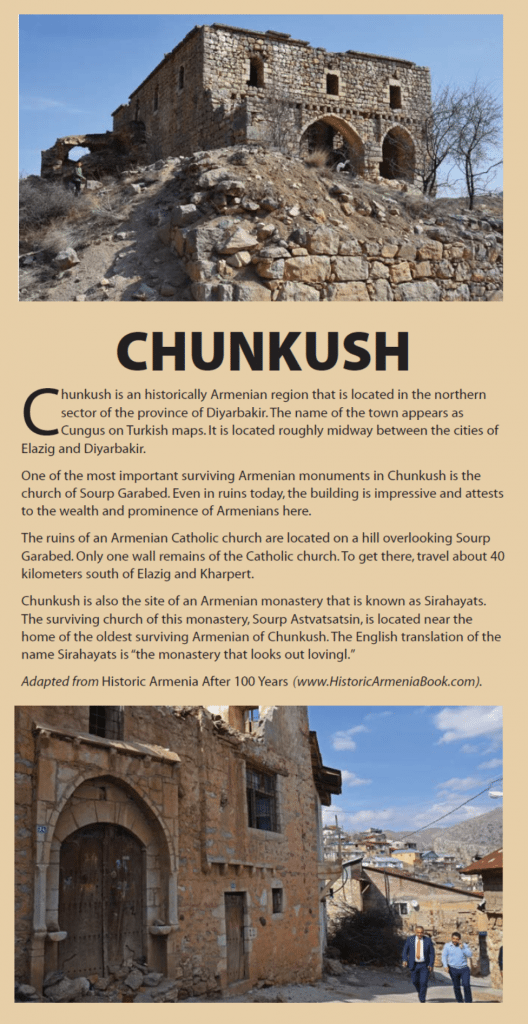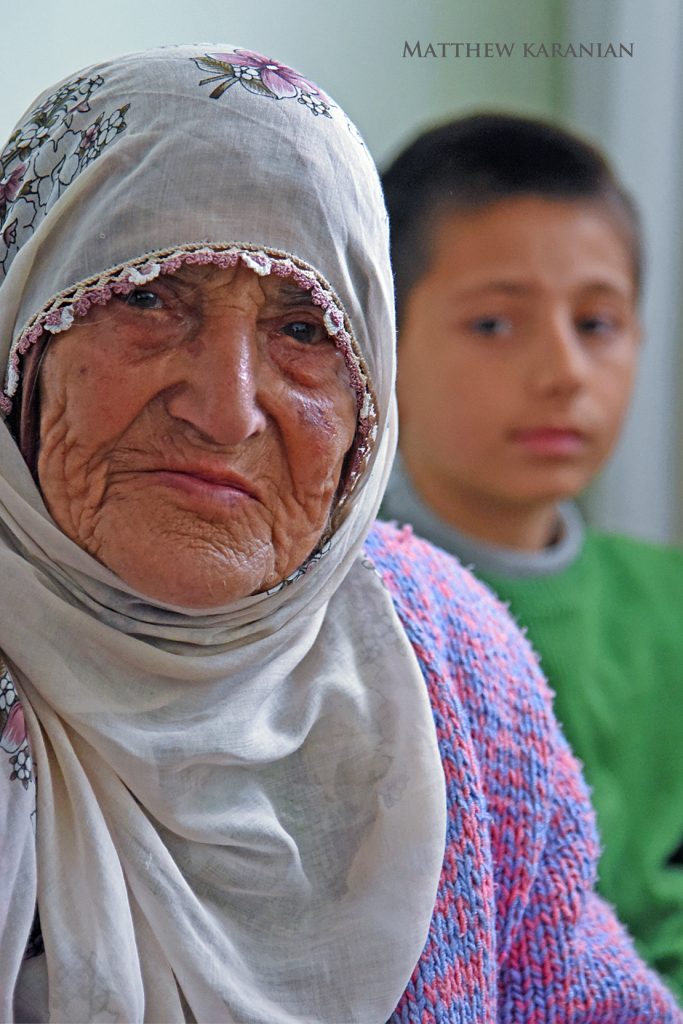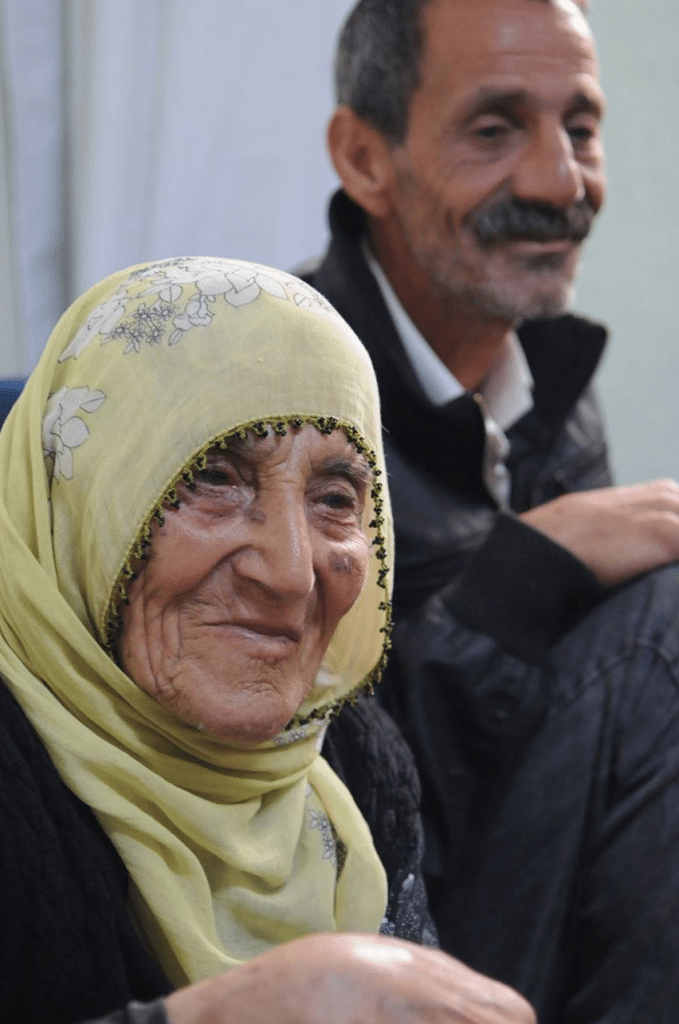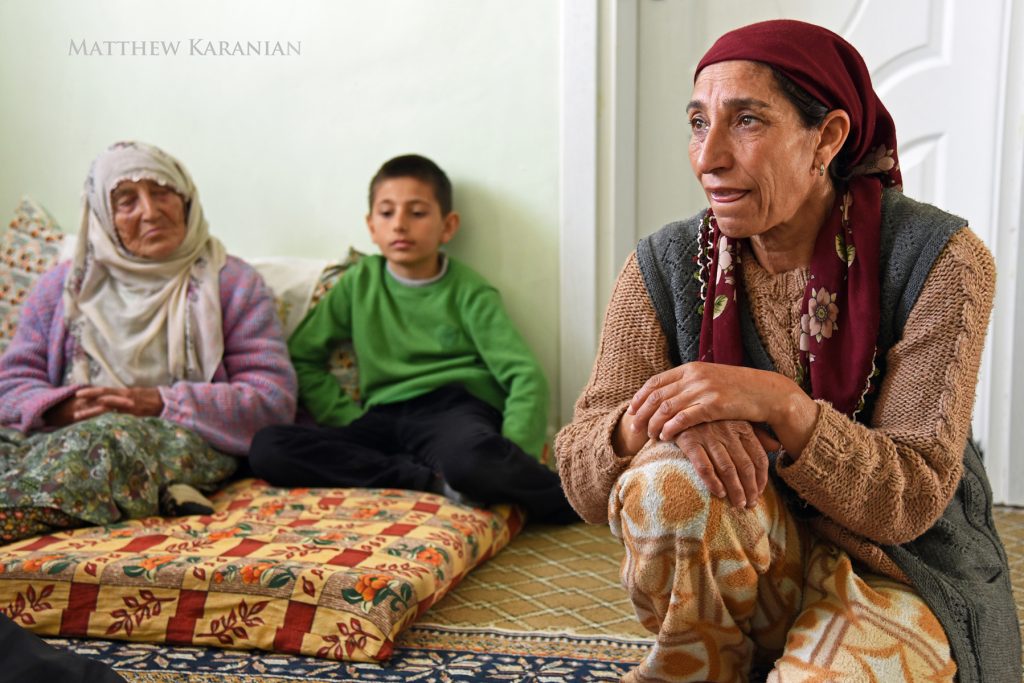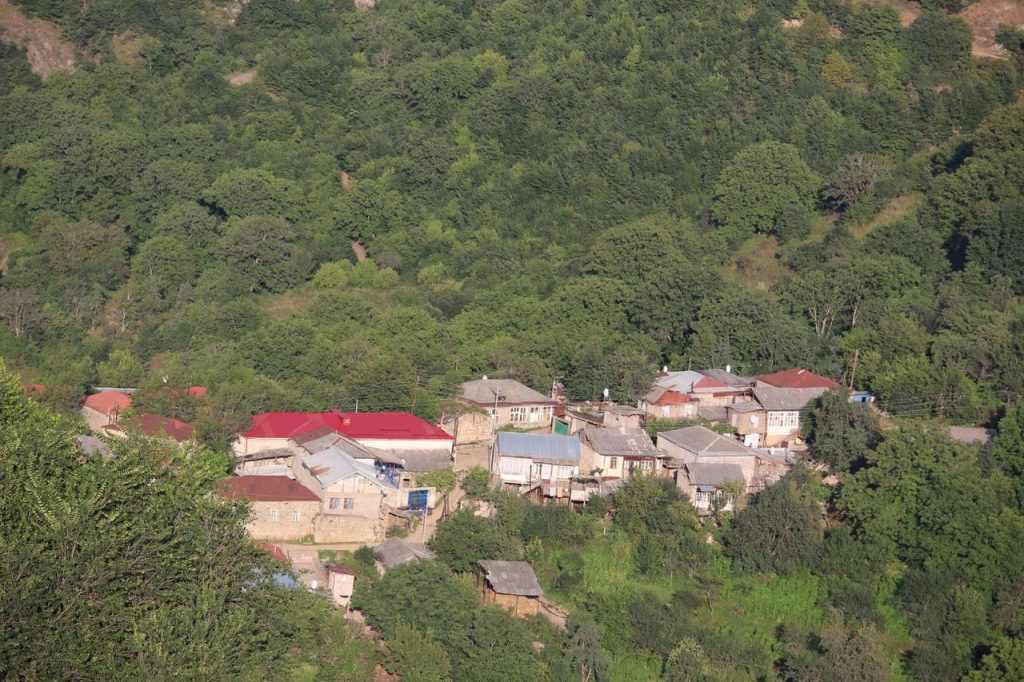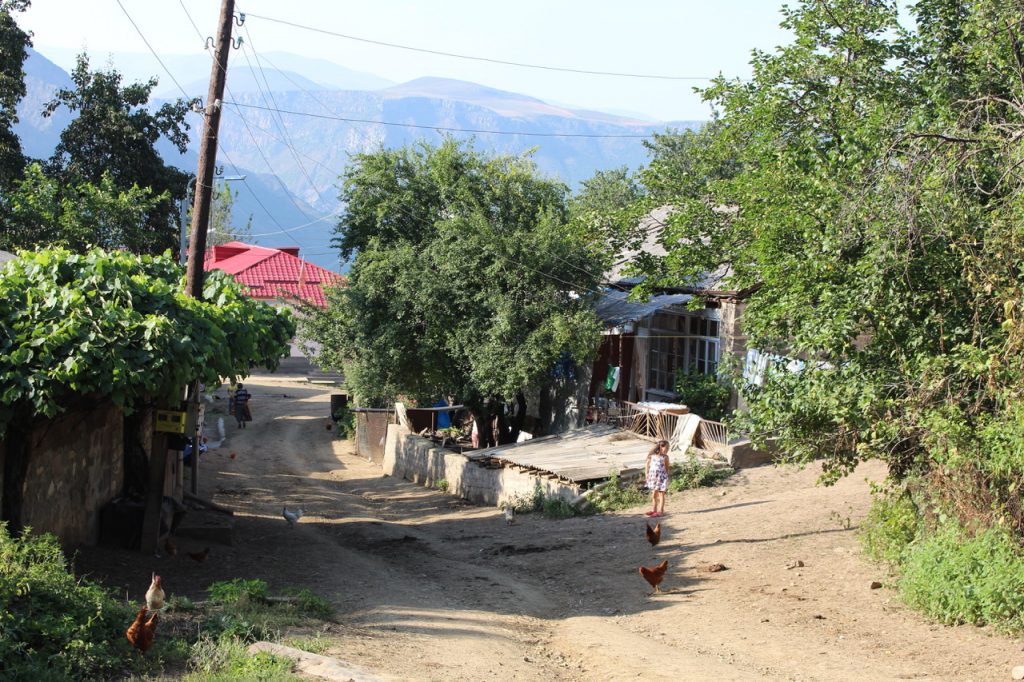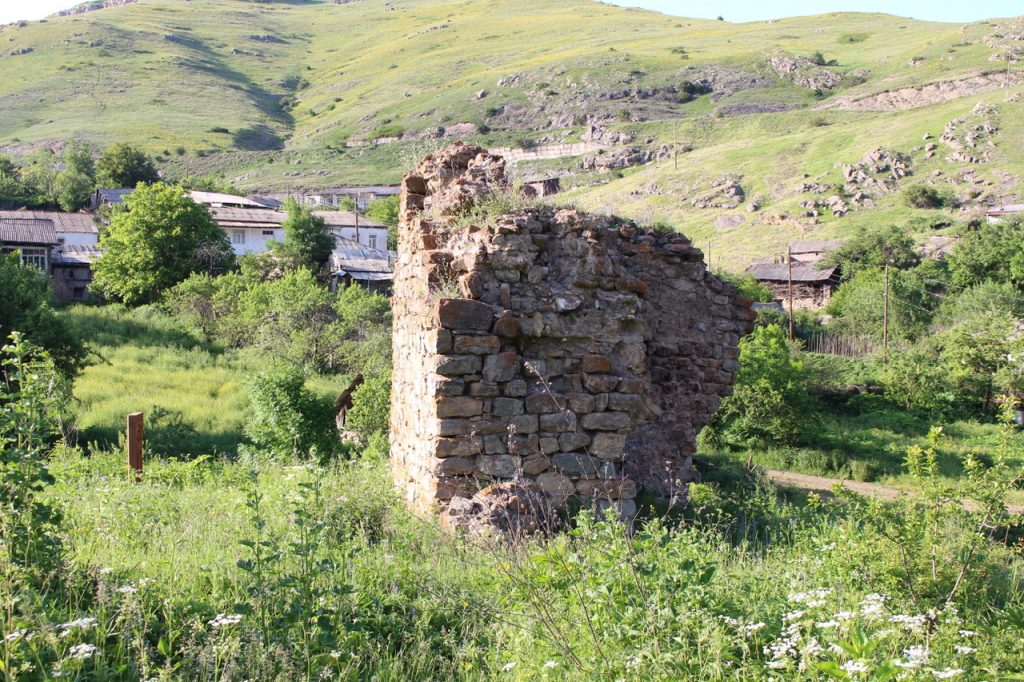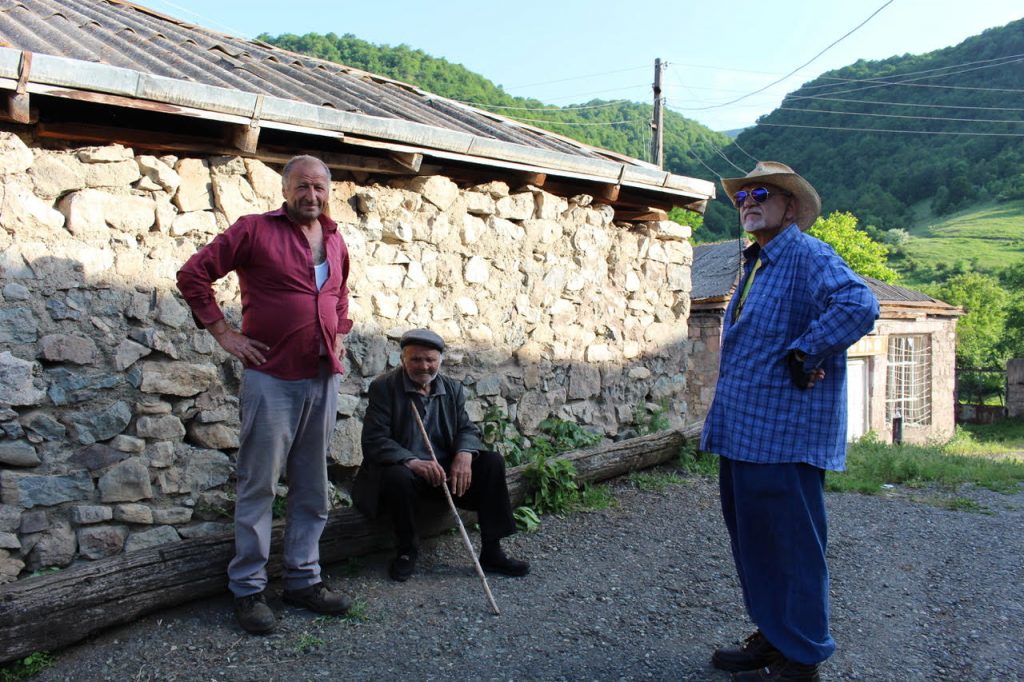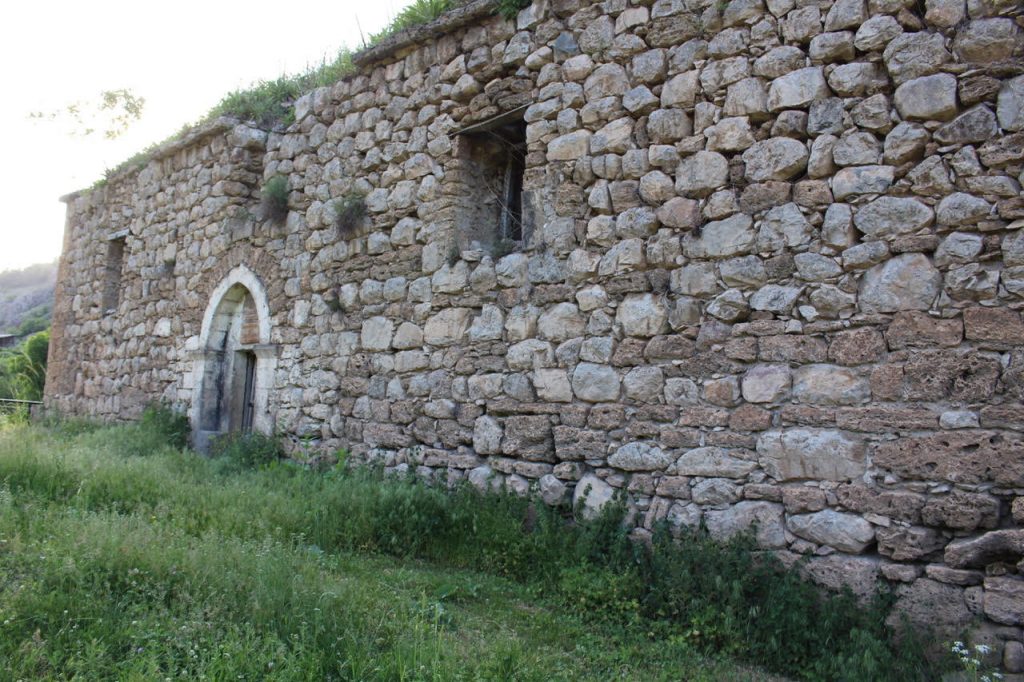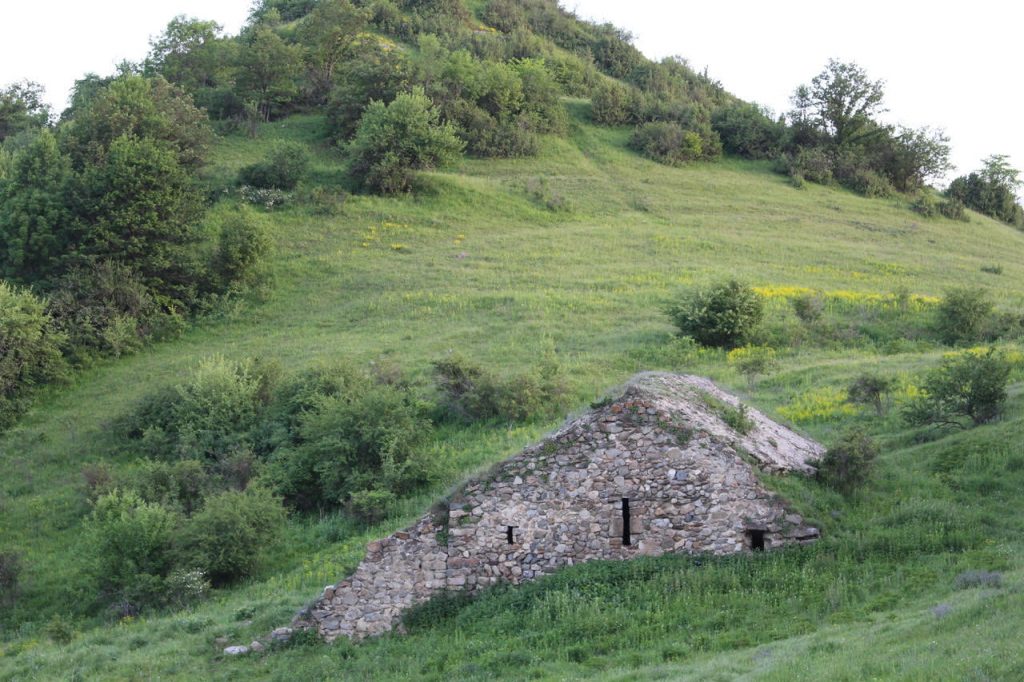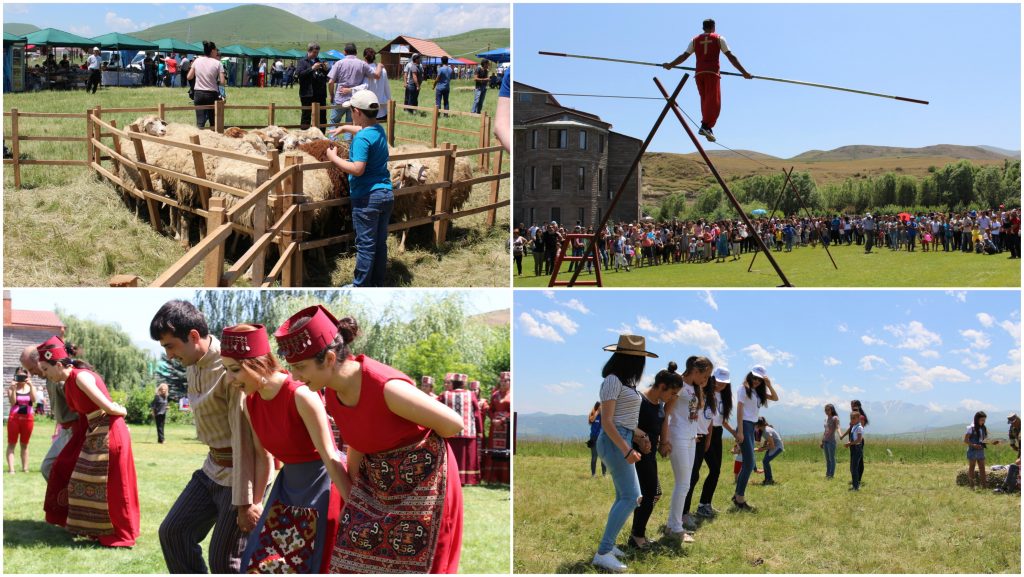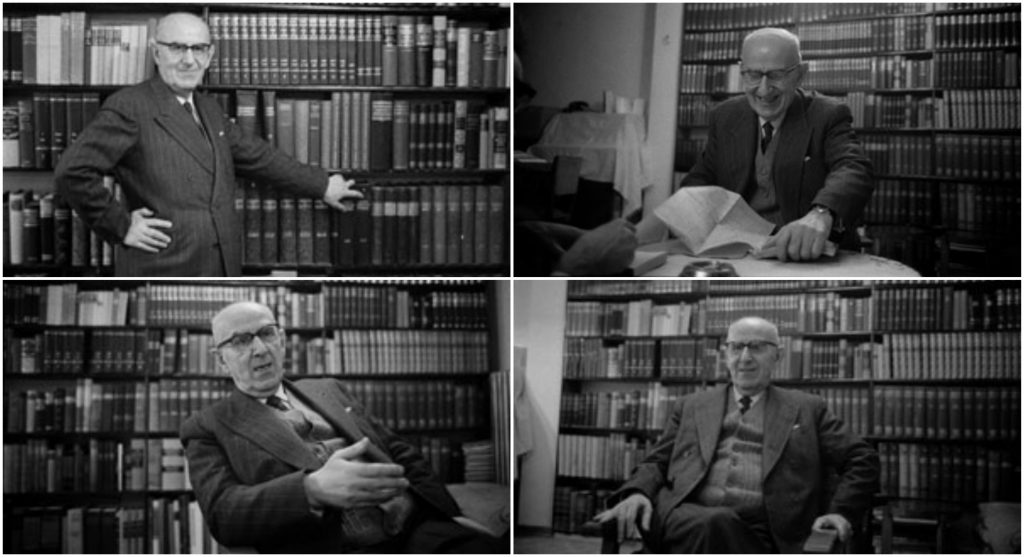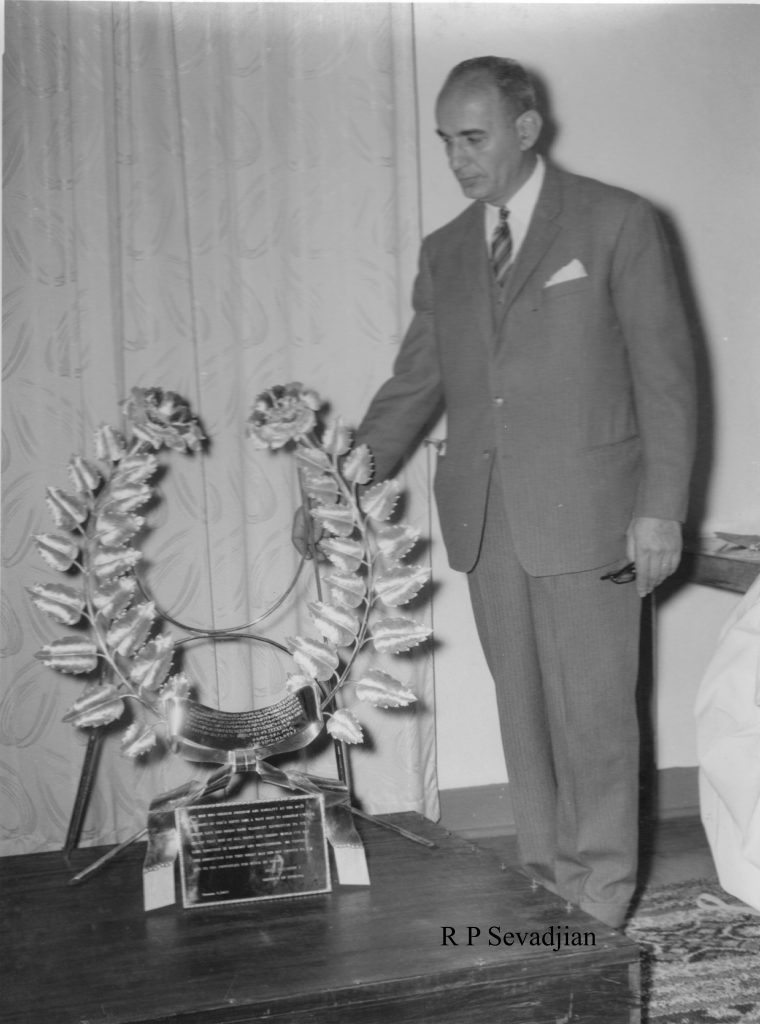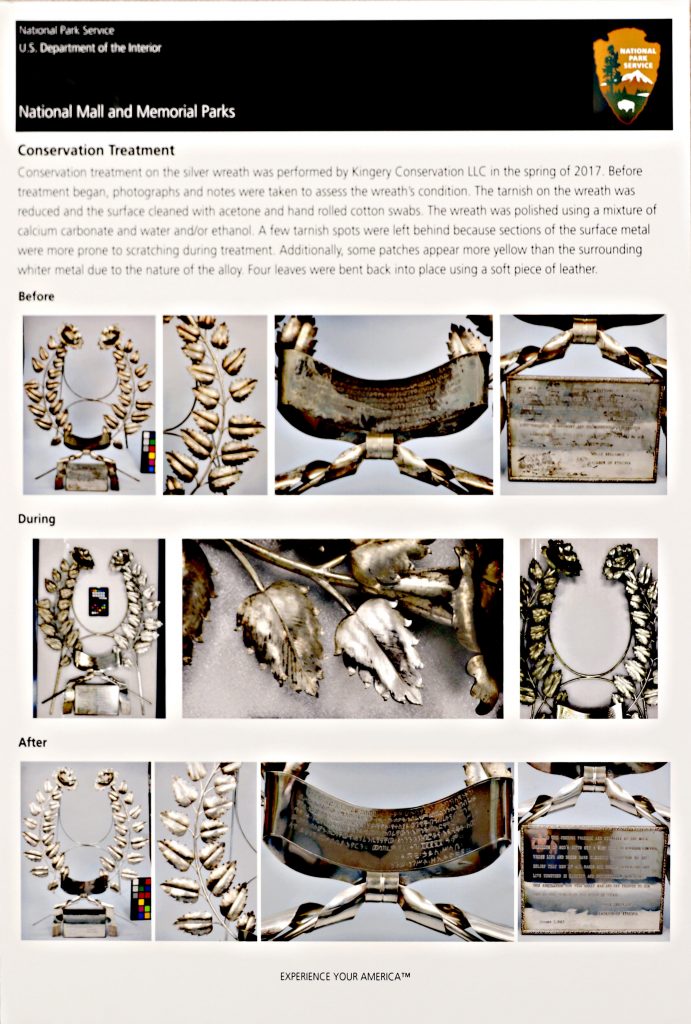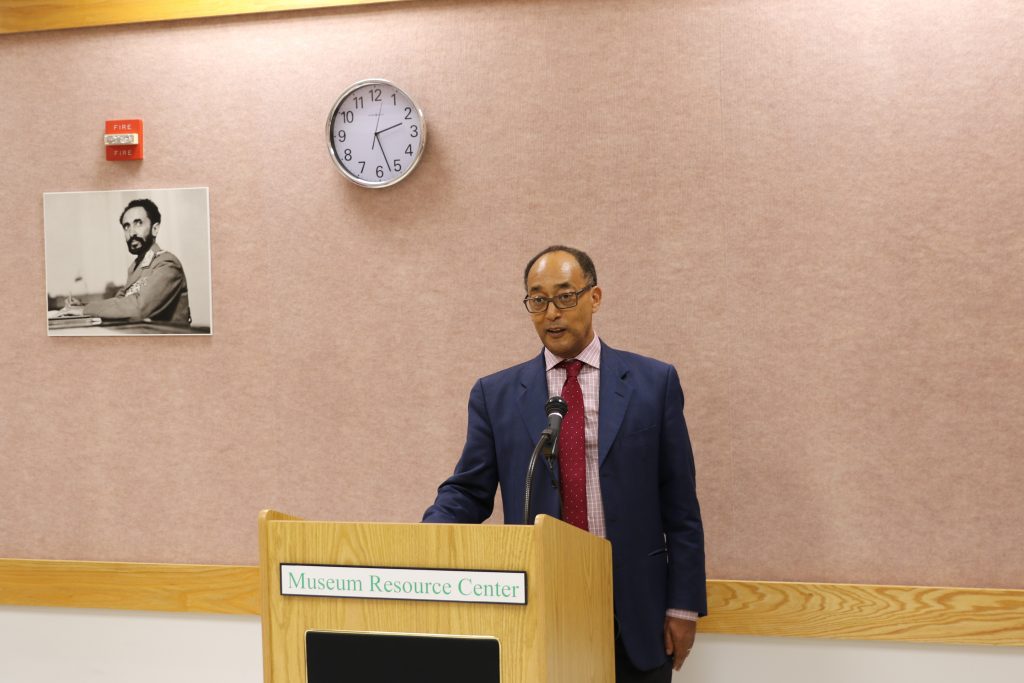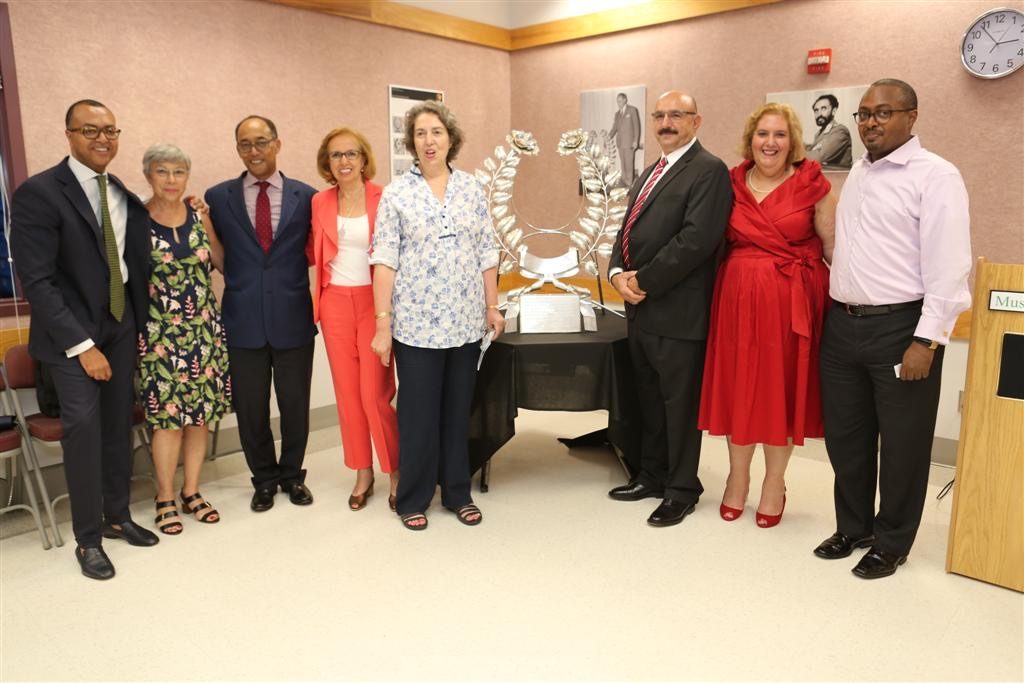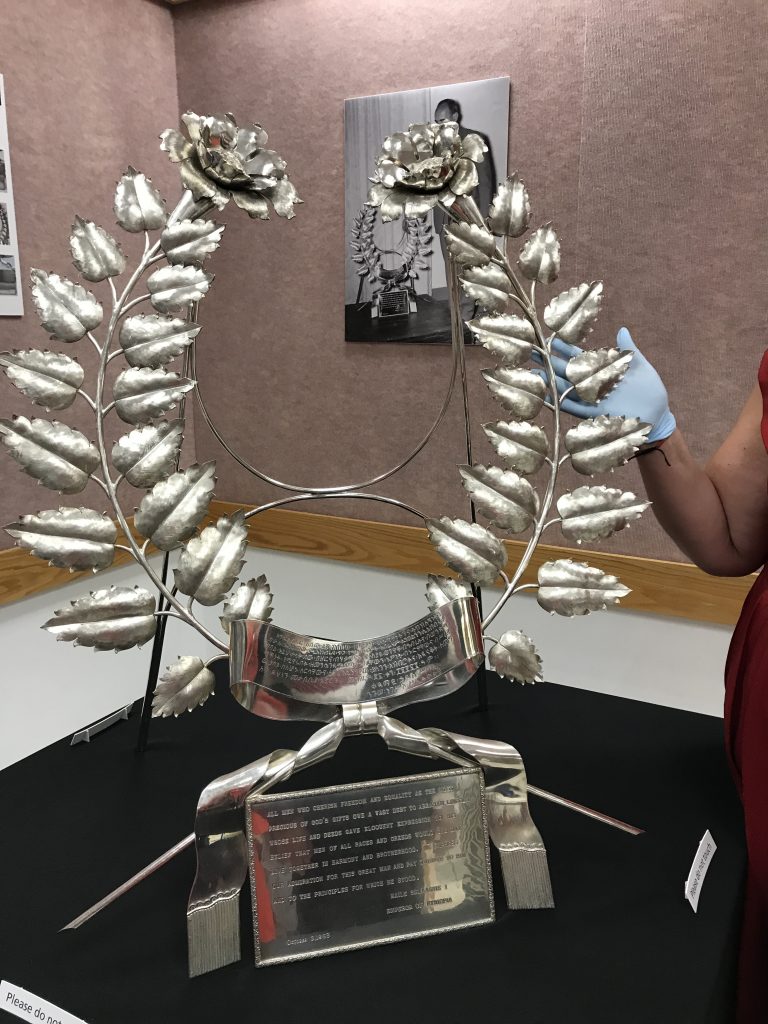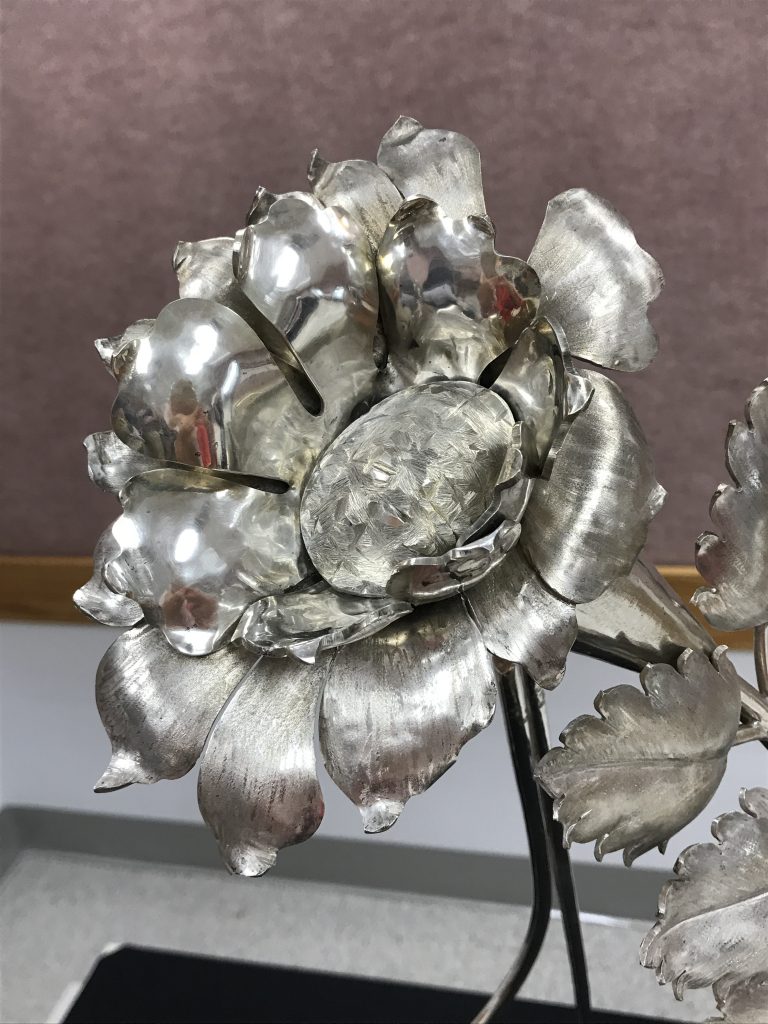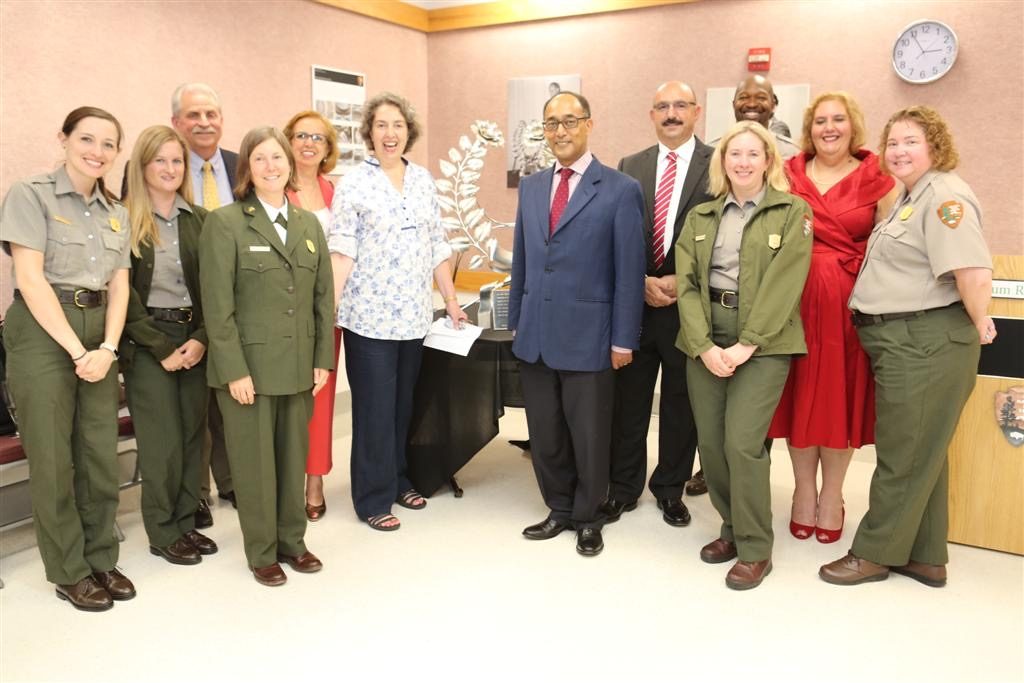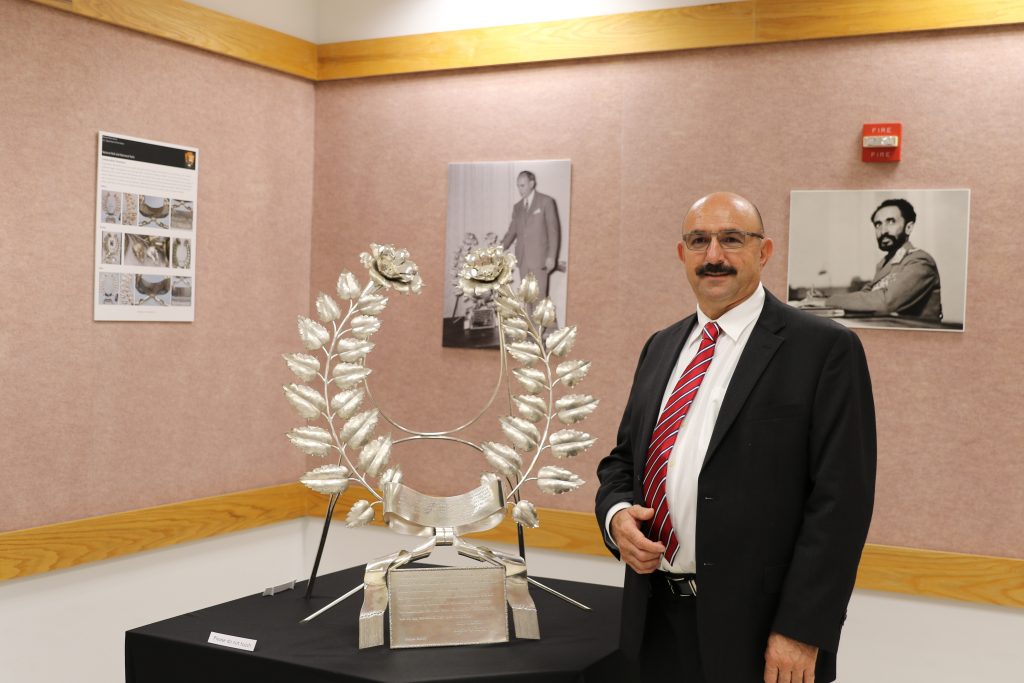Special for the Armenian Weekly
WRIGHTWOOD, Calif. (A.W.)—Students and young professionals, 26 in all, gathered at AYF Camp in Wrightwood, Calif., on June 29 for the third annual Hamazkayin ArtLinks, a four-day arts retreat organized by the Hamazkayin Western Region, Eastern Region, and Canada regional boards.
The program consisted of five workshops run by experienced thought leaders, all tied to exploring Armenian identity through various lenses: literature, self-reflection, culture, music, and dance.
![]()
ArtLinks participants and organizers with author Chris Bohjalian
The workshops, meals, and free-time activities were planned to foster friendship among youth participants and engender an appreciation of the Armenian arts, as part of a greater effort to establish an open environment for deeper dialogue on a modern definition of what it means to be Armenian.
“ArtLinks was a truly special, immersive experience that I look forward to participating in again.” said Elia Bilemjian, a first-time participant from Los Angeles. “In addition to the free-spirited, unadulterated fun, it created an environment conducive to important dialogue about forward-looking Armenian-related topics that are not typically covered in mainstream narratives.”
“As we dissected Armenian identity, the conversation covered how there is no one-size-fits-all checklist and what the seemingly ubiquitous Armenian spirit is even supposed to be or represent,” Bilemjian added.
Program Introduction
The agenda officially began on Friday. After breakfast, program director Khatchig Mouradian offered introductory remarks. He welcomed all the participants to ArtLinks and laid out the objective of the weekend: a spirited exploration of Armenian culture and identity. He thanked the Hamazkayin regional boards for their dedication to youth engagement, and he encouraged the participants to get to know one another and the thought leaders over the course of the weekend.
![]()
After breakfast, program director Khatchig Mouradian offered introductory remarks. (Photo: Lori Elagoz)
Mouradian remarked that ArtLinks is one vehicle for ensuring that critical discussions surrounding Armenian culture, a cornerstone of the global Armenian nation, occur. Through such discussions, one can actualize the importance of culture in calling one’s self an Armenian, and ultimately, help further the Armenian Cause.
Mouradian, a scholar and frequent visitor to Western Armenia, also commented on a recent trip he made to the historic homeland just a few days prior to the retreat. He shed light on the “hidden Armenians”—Islamized Armenians living in the Republic of Turkey who have recently discovered and are coming to terms with their Armenian roots. These individuals, he said, often have much more difficulty engaging with the Armenian culture in light of the current structures of Turkish society, and that we should be aware of and open to embracing them as fellow Armenians.
![]()
The program consisted of five workshops run by experienced thought leaders, all tied to exploring Armenian identity through various lenses: literature, self-reflection, culture, music, and dance. (Photo: Lori Elagoz)
Mouradian is the Nikit and Eleanora Ordjanian Visiting Professor at Columbia University. Since 2014, he has taught courses on imperialism, mass violence, human rights, concentration camps, urban space and conflict in the Middle East, and collective memory in the history and sociology departments at Rutgers University, California State University—Fresno, and Worcester State University.
Creative Writing
The workshops opened with a session on literature, led by renowned novelist Chris Bohjalian. He spoke about his journey of becoming a young writer in New York City, walked participants through his process of writing novels, reviewed storytelling mechanics, and led a writing exercise involving the May 16 attack on peaceful protesters outside the Turkish embassy in Washington, D.C.
![]()
The workshops opened with a session on literature, led by renowned novelist Chris Bohjalian. (Photo: Lori Elagoz)
Bohjalian spoke about his experience of working in advertising while submitting dozens of story concepts before finally selling his first novel and going on to write widely popular books, including Midwives and The Sandcastle Girls. He encouraged the retreat participants to genuinely not give up on their passions, despite seemingly insurmountable odds. An elegant and thoughtful speaker, Bohjalian recounted humorous anecdotes from the U.S. book tour of his most recent novel, The Sleepwalker, and walked participants through a day of novel-writing in his world, which includes but is not limited to, waking up early to start, watching movie trailers, and biking through the Vermont countryside for inspiration.
Bohjalian highlighted the influence of his interest in suspense and dread, and his Armenian heritage, in his writing—particularly in his novels The Guestroom and The Sandcastle Girls, respectively. For the latter, he credited Khatchig Mouradian for assisting him with ensuring historical accuracy and in physically exploring Western Armenia numerous times.
The workshop ended with a discussion on the importance of choice in writing, as related to devices such as character selection and perspective (first, second, third), and tense (past, present, future). These factors can be manipulated in various ways, often resulting in varying experiences for a reader, all depending on the motives of the author. To conduct this exercise, Bohjalian prompted the participants with the following phrase: “a group of black SUVs stops in front of the Turkish embassy.” The participants were tasked with opening a short story about the recent protest attacks with complete autonomy over character selection, perspective, and tense. The result was a wide variety of narratives: some from the perspective of protestors, others from a third-person omniscient perspective, some from the attackers’ point of view, and even one from that of Turkish President Recep Tayyip Erdogan. All, however, provided commentary on the severity and relative lack of accountability for the attacks.
The participants realized the power of author’s choice in literature, and thanked Bohjalian for leading a captivating discussion.
Razmig Sarkissian, a participant from Los Angeles, commented: “Not often enough does a room full of young Armenians collectively discuss…or engages in candid conversations about the importance of authenticity in storytelling, but that’s exactly what we did during Chris Bohjalian’s ArtLinks writing workshop.
“Meeting Bohjalian and hearing him share his experiences as an author and how much hard work it took to become successful, reaffirmed for me that those of us who love writing aren’t alone, and that our creative aspirations to one day write novels, or screenplays, or poetry can be realized.
“It really feels like we are a part of an emerging moment in Armenian-American media, literature, and culture, and experiences like ArtLinks are an exciting and meaningful way to energize and awaken the potential of this moment we are in.”
Bohjalian is the author of 19 books, most of them New York Times bestsellers. His works have been translated into more than 30 languages, and three times they have been adapted to film. His books have been chosen as Best Books of the Year by the Washington Post, the St. Louis Post-Dispatch, the Hartford Courant, the Milwaukee Journal-Sentinel, Publishers Weekly, Library Journal, Kirkus Reviews, Bookpage, and Salon. His novel Midwives was a number-one New York Times bestseller, a selection of Oprah’s Book Club, and a New England Booksellers Association Discovery pick.
Who Is an Armenian?
After lunch, Nanore Barsoumian led the second workshop of the day on difficult conversations surrounding identity. Employing an interactive discussion medium, Barsoumian challenged the group to think introspectively and respond to one another when answering questions like “What is identity?” and “What does it mean to be Armenian?” This set the stage for an engaging conversation on identity.
![]()
A lively discussion during a workshop led by Nanore Barsoumian
Referencing the current reality of half, Islamized, and non-Armenian-speaking Armenians, the group deconstructed the notion of a single definition of a “true Armenian.” Rather, through constructive discussion, participants challenged that concept with thoughts on how Armenian identity is fluid and ever-changing, especially today.
One activity during the workshop exemplified this notion. Barsoumian requested that all participants write seven words or phrases that make up their “identity,” and then asked them to eliminate four from the total. The resulting three identity markers for each person ranged in priority on geographic location, citizenship, religion, age, gender, sex, ethnicity, career, etc. Despite their differences, the participants still knew that they were connected in their common connection to the same Armenian spirit and were comfortable with that reality. They concluded that one can self-define connection to the Armenian nation—whether through language, dance, music, arts, history, place of residence, occupation, or membership in certain organizations—without concern over judgement from others. An individual can genuinely “be Armenian” simply by consciously using one of the aforementioned paths, as opposed to having to necessarily ascribe to all. Such a framework opens up the notion of “being Armenian” to be more inclusive, dynamic, and able to interact with other cultures.
“Barsoumian’s discussion, which allowed us the opportunity to explore and unpack identity, confirmed how fluid and multifaceted Armenian identity is,” commented Carla Kekejian, a participant hailing from Los Angeles. “The aspects that make up our individual identities, including our Armenian identities, are unique and ever-changing, and cannot be segmented in columns of right or wrong, good or bad.”
Barsoumian is a graduate student in the Department of Conflict Resolution, Human Security, and Global Governance at the University of Massachusetts Boston (UMB). She was the editor of the Armenian Weekly from 2014 to 2016. Prior to that, she served as assistant editor, from 2010 to 2014. She has reported from Armenia, Artsakh, Javakhk, and Turkey. Barsoumian holds a graduate certificate in Conflict Resolution, and a BA in English and Political Science from UMB. She serves on the Hamazkayin Armenian Educational and Cultural Society’s U.S. Eastern Region Executive Board.
The day waned into the night with dinner, swimming, music, and dance. The participants, speakers, and Hamazkayin leaders also celebrated the birthday of Manoug Joukhajian, a chief ArtLinks organizer, around the campfire. Joukhajian warmly shared words of appreciation and joy over the growth of program over the past three years.
The Status and the Future of Armenian Culture
On Saturday, artist and author Vahe Berberian led the first workshop of the day, centered on Armenian culture. Building on themes discussed at the beginning of the weekend, Berberian reflected on his life growing up in Lebanon and traveling throughout Europe before realizing that his Armenian identity had always been a benefit for him in terms of informing his worldview on art, literature, and film. “It gave me a creative ‘edge’ when interacting with other cultures, and I have always found pleasure in being Armenian,” he said.
![]()
Artist Vahe Berberian leading a discussion with ArtLinks participants on culture and identity
This set the stage for an engaging discussion during which participants responded to one another as they dug deep into the current status and future of Armenian culture. One theme was that genocide-inspired art, dance, and music often dominate the conversation of culture. Some participants noted how, although it is very important to be mindful of commemoration and advocacy efforts, this sometimes can prevent new exploration of culture or interaction with non-Armenian cultures.
Another discussion point was the Armenian language, and the frequent judgement that comes with speaking “broken” or no Armenian at all. Participants agreed that people should be free to pursue their own dialect of the language to the best of their abilities when exploring their identity, without feeling pressure from their peers concerning mastery of the language. The role and administration of education in Armenian private schools and Saturday schools were pinpointed as areas where efforts should be made to address this.
One participant crafted a metaphor of comparing culture to a discrete fruit preserve housed in a jar. In the jar, a culture, along with all its traditions, pastimes, and memories can live. And this approach is understandable: The Armenian people have endured genocide, forced refugeedom, purges, and creative repression due to their identity, leading one to comprehend the current emphasis on preserving traditions. Although it is integral to remember the past, honor our ancestors, and maintain traditions, if the jar is left unopened, the culture can remain stagnant. It may become unable to dynamically interact with the rest of the world and thrive. According to some participants, “opening the jar” (in this case, pushing the boundaries of the current definition of Armenian culture) would allow for the culture to grow to, for example, simultaneously honor genocide victims through art while also providing for pathways to explore new themes of art, music, and literature, and interactions with non-Armenians.
Bilemjian noted how he “appreciated how Berberian brought up something that we rarely see any more in the Diaspora: the interest of Armenians with varying dialects making an effort to learn each other’s unique vocabularies instead of carelessly switching to English.”
Reflecting on Berberian’s workshop, Astghik Aprahamian, a Montreal-based participant, remarked, “We furthered our discussions about identity for Armenians with diasporan communities. What became evident is that each individual lives their identity differently: For some, it’s taking an active part in Armenian organizations; for others, it might be more personal, like reading Armenian literature or listening to Armenian music. What became evident through our discussion, though, is the dangers of solely focusing on preservation, which can completely paralyze a culture, and prevent it from creating anything new.”
Born in Beirut, Berberian has been living in the United States for 40 years. With five one-man shows, Berberian has established himself as the leading Armenian monologist. His material is funny, witty, and rich with observations on the Armenian condition. Berberian is the author of numerous plays, including Pink Elephant and Gyank, two novels that have been published in three languages, and over a dozen movie scripts. He is also a prolific painter and has had numerous exhibitions all over the United States and abroad.
Music as a Vehicle for Culture
Following lunch, Ara Dabandjian continued the weekend’s dive into culture that had begun during Berberian’s workshop, but through the lens of music. Dabandjian recounted his experiences of being introduced to the Armenian community in Lebanon as an adolescent, later discovering his passion for music, and then founding Element Band to advance Armenian music. Through Element Band and its at-times intersecting jazz, tango, and rock themes with Armenian folk tunes, Dabandjian found a way to entice a wide variety of international audiences to appreciate Armenian music.
![]()
Musician Ara Dabandjian of Element Band leading a workshop on music
The group discussed what constitutes “Armenian music”—whether it is solely defined by Armenian lyrics, instruments, and melodies. Furthermore, participants brought up how Armenian instruments and tunes have been appropriated by other cultures, which we should be aware of. One participant commented on the inherent political nature of music, implying how it can be used as a tool to share widely received messages and, therefore, further the Armenian Cause—an example being Armenian music performed by the likes of Onnik Dinkjian in Western Armenia. Another participant commented on the rise of new, young Armenian musicians, including Tigran Hamasyan and Bei Ru, who both marry traditional Armenian melodies with newer forms of jazz, electronic, and classical music genres. Such musicians, the group discussed, can help modern Armenian culture grow and meaningfully contribute to the greater global conversation on music.
Bilemjian commented that the workshop deeply resonated with him, considering his fascination with Armenian music. “The type of music that Dabandjian particularly focused on, and that I often listen to, is often neglected: oud-heavy Western Armenian music, sometimes with Ottoman flavors,” Bilemjian said. “We had a sincere discussion about the stigma surrounding this ‘Turkish-sounding’ music and Turkish culture in general. A key realization was that we should break boundaries and reject the guilt behind the pleasure in consuming cultural material that has drawn heavily from our heritage in addition to that of the other indigenous communities of the Anatolian region.”
Dabandjian is best known for founding the popular, Los Angeles-based, folk ensemble Element Band. His compositions and musical arrangements have garnered multiple awards. Dabandjian’s compositions deliver unique expression of folk-fusion by incorporating deft instrumentation, lush vocal harmonies, and rich multi-ethnic musical styles that have landed him at prominent stages around the globe. His compositions are credited in several theatrical productions, including Tim Robbins’s “Actors’ Gang,” Academy Award winner Alex Dinelaris’s “Red Dog Howls,” Dr. J. Michael Hagopian’s “The River Ran Red,” and multiple scores for motion pictures and documentaries.
Following Dabandjian’s workshop, Hamazkayin regional board members, including Manoug Joukhajian and Zvig Guedikian, thanked the workshop thought leaders with words of appreciation and gifts. After dinner, participants not only danced and sang the night away but also continued, into the early hours of the morning, the ongoing conversations surrounding identity and their own roles in the community as young Armenians.
Commenting on the camaraderie established at every ArtLinks retreat, Helena Bardakjian, a two-time participant from Detroit, MI, said, “ArtLinks is something much larger than a four-day event! When you leave ArtLinks, you walk away with not only thoughts that encourage you to take another look and examine how you view the world and the Armenian community, but you also become a part of a tight-knit network of young professionals from a variety of different fields and experiences.”
Culture Through Dance
On Sunday, Taleen Mardirossian led the closing workshop on Armenian dance. Reflecting on her own experience of growing up with dance at family gatherings, Mardirossian helped the participants realize that through this medium Armenians not only maintain traditions passed on from previous generations but also genuinely connect with other Armenians from all over the world. Thus, dance can play a key role in the life of the greater Armenian community.
![]()
On Sunday, Taleen Mardirossian led the closing workshop on Armenian dance.
The group started by practicing “shoorchbar” fundamentals, led by Mardirossian, and gradually added steps from the “papuri,” “msho khr,” and “mayroke,” among others. By the end of the workshop, the entire group was passionately moving in synchrony to the beat of the “dhol” on the loudspeaker—pinkies interlocked and lyrics proudly recited.
Reflecting on Mardirossian’s workshop, Los Angeles-based participant Lori Kassabian said, “Armenian folk dance is one of my favorite things to engage with, and it is such a beautiful way to connect with Armenian culture. It was an amazing experience to get together with young Armenians from all over the continent and dance these dances that have existed in our culture for centuries.”
Mardirossian is an attorney from Los Angeles, pursuing an MFA in creative writing at Columbia University. A descendant of Sassoun, the land of those whose dances exude the kind of passion that could move mountains, she is a proud inheritor of “yarkhushta” and “msho khr.”
Goodbyes and Reflections
As the participants departed from AYF Camp on Sunday, they affirmed their commitment to staying in touch with one another and continuing the discussions that began during the retreat, and they thanked the Hamazkayin regional boards for organizing the logistics of a wonderful weekend.
![]()
A group of participants (Photo: Lori Elagoz)
They noted and appreciated how, although the discussions originated in different topic areas, they all naturally gravitated toward the same conversation on identity—on what it means to be a young Armenian today.
They realized that a consensus of who a “true” Armenian is was not reached because it is virtually impossible to objectively pinpoint the way to be a “true” Armenian: It is open to personal interpretation. The fruitful conversations led to an understanding that the definition of being Armenian is broader and more dynamic than previous generations have conceived it. No matter the sex, creed, religion, mastery of language, citizenship, career, or organizational membership of a person, so long as a conscious, personal effort to be Armenian through any medium is pursued, a genuine connection—and, therefore, contribution—to the culture and greater community is made.
“The rapidly established and intimate connections were reminiscent of my time in Birthright Armenia, as we were all on the same page and possessed a common passion for our collective future as a people,” Bilemjian said.
“Being Armenian, with all its imperfections and difficulties, is such a beautiful, exciting, resilient, and colorful thing; and that feeling, basically of how unbelievably cool it is to be Armenian, was flourishing at ArtLinks,” commented Kekejian. “Beyond the organized discussions, getting to talk, dance, dream, joke, and create with Armenian youth from across the country and Canada was truly magical.”
The next Hamazkayin ArtLinks retreat is tentatively set to be held in the eastern United States. More details concerning the event will be announced in due course.

